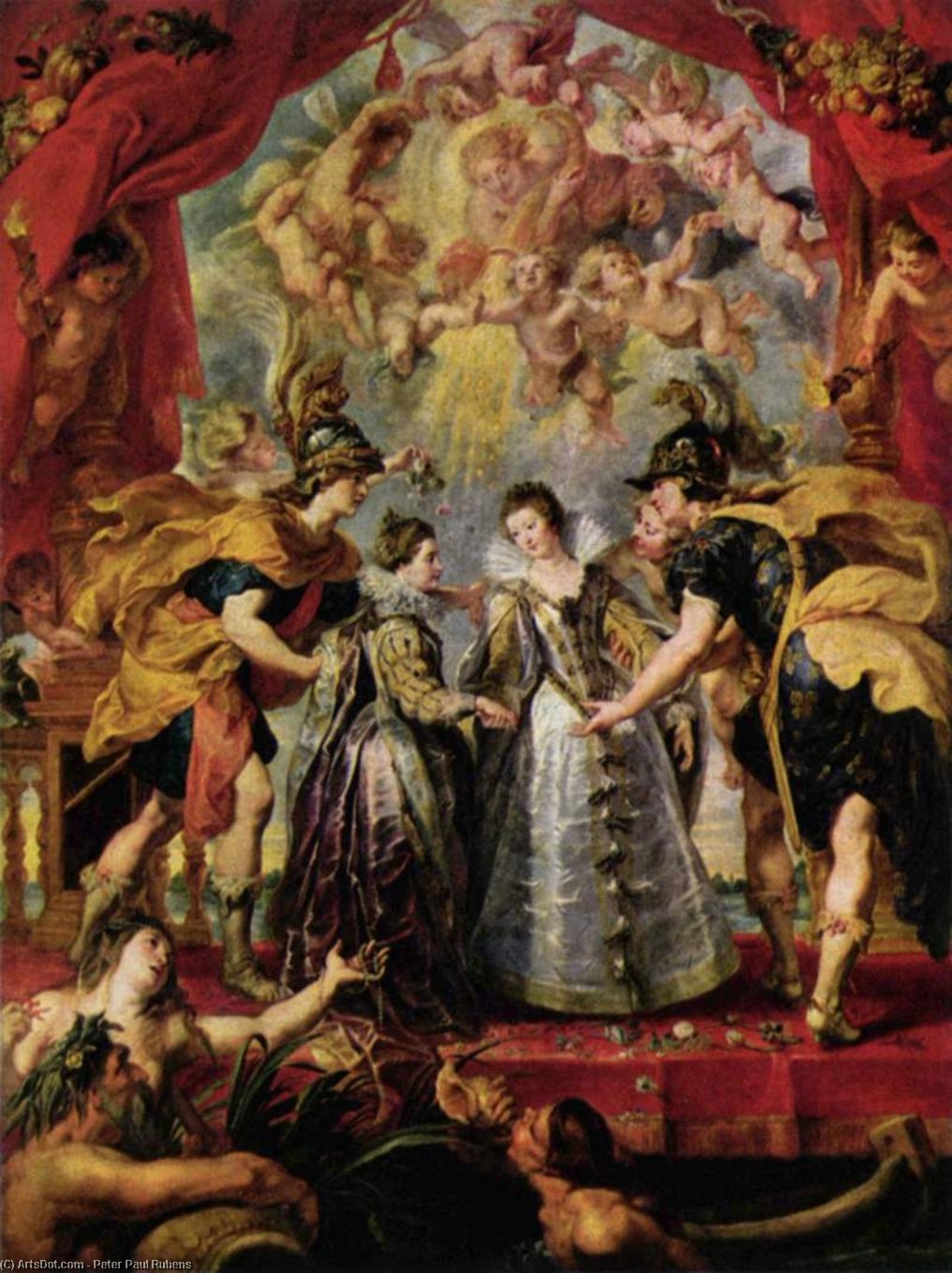Artist: Peter Paul Rubens
Style: Baroque
Topic: Royalty
Technique: Oil
One of the Marie de' Medici cycle's painting; The Exchange of Princesses celebrates the double marriage of the Habsburg Infanta Anna of Spain to Louis XIII of France and Louis XIII's sister, Isabella Bourbon, to future king of Spain, Phillip IV on 9 November 1615. France and Spain present the young princesses, aided by a youth who is probably Hymen. Above them, two putti brandish hymeneal torches, a small zephyr blows a warm breeze of spring and scatter roses, and a circle of joyous butterfly-winged putti surround Felicitas Publica with the caduceus, who showers the couple with gold from her cornucopia. Below, the river Andaye is filled with sea deities come to pay homage to the brides: the river-god Andaye rests on his urn, a nereid crowned with pearls offers a strand of pearls and coral as wedding gifts, while a triton blows the conch to herald the event. The wedding, which was thought to secure peace between France and Spain, took place on a float midway across the Bidassoa River, along the French-Spanish border. In Ruben's depiction, the princesses stand with their right hands joined between personifications of France and Spain. Spain with a recognizable symbol of a lion on her helmet is on the left, whereas France, with fleur-de-lis decorating her drapery, is on the right. Anna, at age fourteen the older of the two, turns back as if to take leave of Spain, while France gently pulls her by the left arm. In turn, Spain can be seen taking the thirteen year old Isabella by her left arm.
Artist |
|
|---|---|
Download |
|
Permissions |
Free for non commercial use. See below. |
Peter Paul Rubens – Most viewed artworks
|
This image (or other media file) is in the public domain because its copyright has expired. However - you may not use this image for commercial purposes and you may not alter the image or remove the watermark. This applies to the United States, Canada, the European Union and those countries with a copyright term of life of the author plus 70 years.
|















 Note that a few countries have copyright terms longer than 70 years: Mexico has 100 years, Colombia has 80 years, and Guatemala and Samoa have 75 years. This image may
not be in the public domain in these countries, which moreover do not implement the
Note that a few countries have copyright terms longer than 70 years: Mexico has 100 years, Colombia has 80 years, and Guatemala and Samoa have 75 years. This image may
not be in the public domain in these countries, which moreover do not implement the